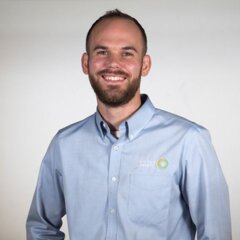How to Work and Walk in an Attic Safely

Attics can be a dangerous place to work. From exposed wiring overhead to airborne particulates stirred up from the insulation below, attic spaces have no shortages of safety hazards.
Extreme temperatures can cause heat-related illnesses, while scattered animal feces can carry disease-causing pathogens. You might bump your head on a truss member or find your face inches away from a nail protruding through the roof deck.
While watching out for these hazards, it can be easy to lose track of your footing in the attic. This brings you closer to another often missed hazard – falling through the ceiling.
Unfloored attic spaces offer very few safe places to walk and one misplaced step can leave your lower half hanging through somebody’s bedroom ceiling, or worse yet, laying on the floor below. Aside from severe injuries that can occur, there will be unforeseen repair costs. Even a perfectly patched and painted hole in the ceiling can leave a customer with a poor experience that affects your company’s reputation.

For many companies, protective measures are limited to relying on words of caution and the dexterity of the workers. New employees are trained by senior employees on what to watch for, and how to step. The hazard is pointed out, but nothing else is done.
While this is better than complete disregard, it does next to nothing to prevent falls and step-throughs from happening for the experienced and inexperienced alike.
Perhaps the most common solution that a company will adopt is to use plywood sheeting to go over the joists, creating a platform to work from. This can be effective when done correctly, as it creates a stable, sturdy work area, but it also comes with a few drawbacks.

The size of the plywood is limited to what can fit through the attic hatch. You will need to be cautious navigating interior spaces with the cut pieces. Many times, these planks are cut for one-time use because it can be impractical at the end of a job to remove the pieces. Otherwise, the plywood pieces begin to take up space in a work vehicle or shop. The time spent cutting new pieces for each job can add up quickly, leaving valuable time and resources on the table.
A more versatile and user-friendly option would be using an expandable, lightweight platform like the CoverSafe Spark, which provides a durable walkway or work area that is fully adjustable. One major benefit of using a collapsible platform is how easy it is to get into place. Because it collapses into a much smaller size, the CoverSafe can easily be passed through even the smallest of attic hatches, before expanding to its full size in the attic space.
More than one CoverSafe platform can be nested together to form a longer walkway through the attic space, or side by side to create a wider working area. Using these portable attic platforms can save workers precious time and energy by eliminating the time spent cutting plywood, for an overall more efficient experience.
When considering how you will approach the hazard of falls and step-throughs in attic spaces, the first step is to count the cost. Doing nothing may cost nothing today but can set you up for incidents in the future that cost far more than the monetary impact. When deciding between options like plywood and expandable mats, consider the long-term materials costs as they add up over time.
Regardless of what you choose, always be sure to continually encourage heightened situational awareness and plan out each move with caution.



